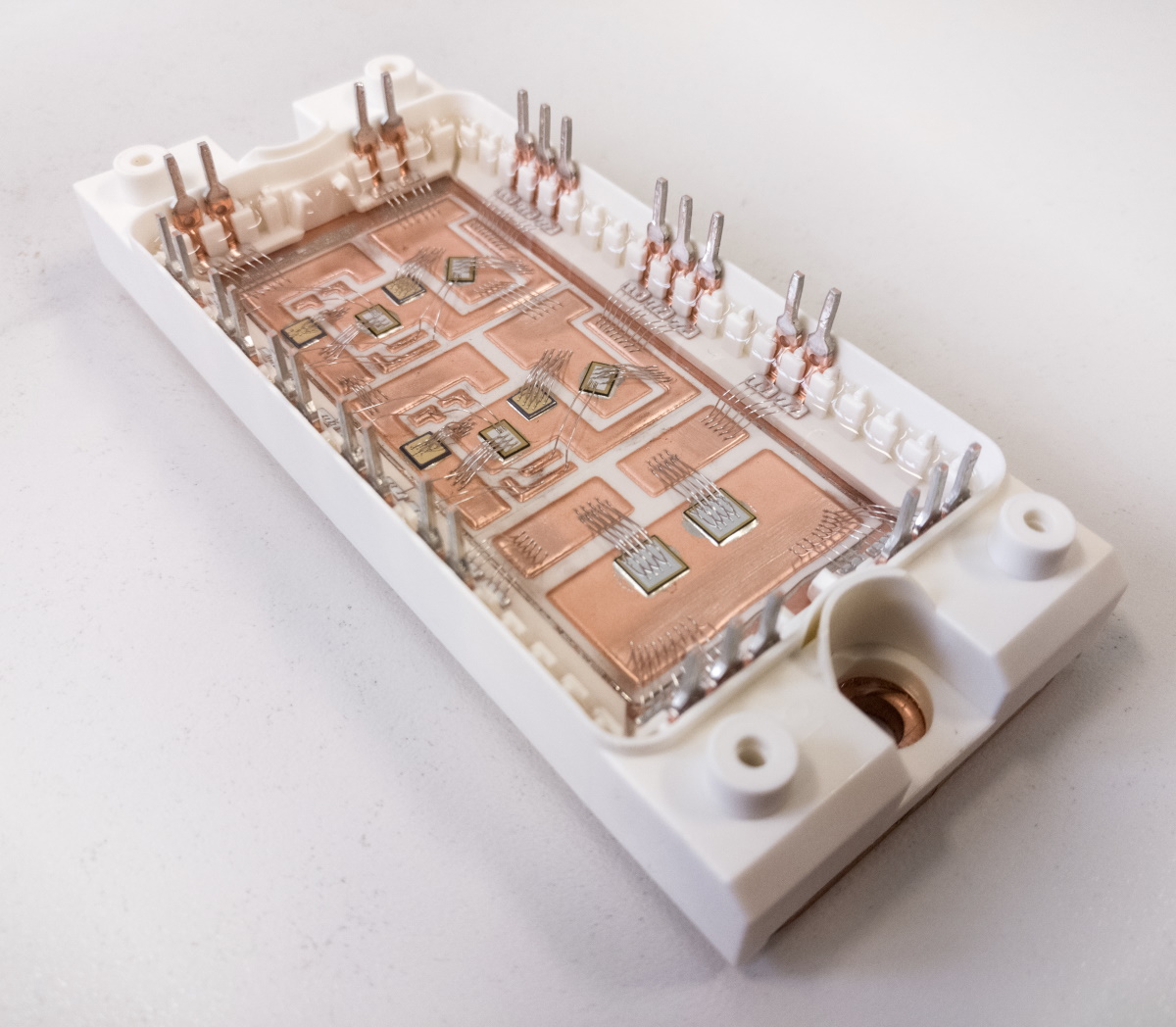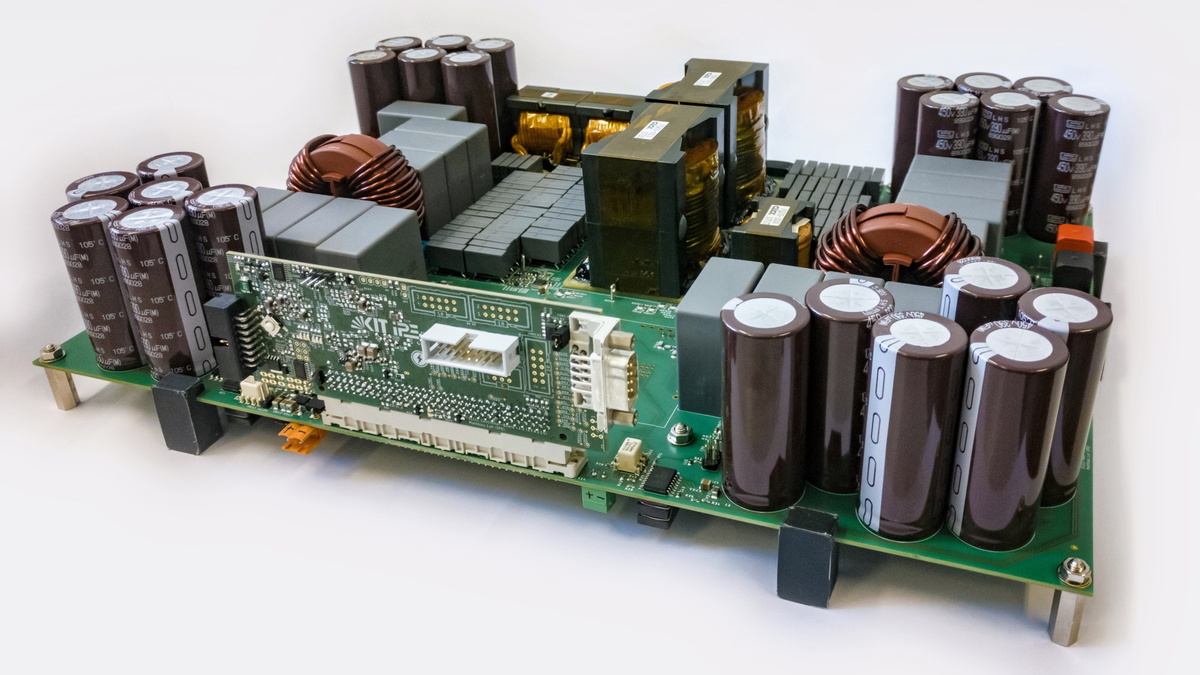Power electronics play a central role in the generation, conversion and use of energy. It converts electrical energy into the form required for the desired application - whether in photovoltaic inverters, chargers for electric vehicles, for driving electric motors, for heating materials or for lighting. Many new applications for power electronics have emerged in recent years. In many cases, the requirements for performance, efficiency, service life, costs, installation space and weight are also increasing. At IPE we develop innovative concepts, processes and prototypes to explore solutions for these new applications and requirements.
Charging systems for electric vehicles
Electric vehicles offer the possibility of a locally emission-free, noise-reduced means of transport with increased driving comfort. Probably the biggest advantage of electric mobility, however, is its much higher efficiency compared to vehicles with combustion engines, as well as the possibility to be powered by renewable energy sources such as solar and wind power. For widespread, socially accepted electromobility, a reliable, affordable and widely available charging infrastructure plays an important role. In this context, we are researching power electronics for electromobility, especially for chargers in stationary DC charging stations as well as in on-board chargers in vehicles for AC charging on the road and at home.
About the technology: Integrated power modules
Vehicle-to-Grid
Battery electric vehicles could play a significant role in the intermediate storage of regenerative energy in the near future. For example, excess electricity from fluctuating energy sources could be stored in electric vehicles and fed back into the grid at a later time. This concept, in which electric vehicle batteries are not only charged from the power grid (as has been the case up to now), but can also release energy back into the grid, is called Vehicle-to-Grid (V2G). By using V2G, more solar and wind energy could be used sensibly than has been the case up to now and the expansion of power grids could be avoided or at least delayed in isolated cases. At the IPE, we are researching power electronics topologies that allow V2G to be used economically, efficiently and effectively. We also deal with potential application scenarios and the influence of V2G on the lifetime of battery cells.
About the technology: Integrated power modules
The efficient and reliable operation of modern power electronics places high demands on the control and monitoring by the microcontroller and its software. Increasing switching frequencies allow converters to be designed more compactly, and resonant topologies can increase their efficiency and performance. For this purpose, a large number of measurement signals must be acquired and evaluated with low latency, and a series of often complex PWM signals must be generated in order to control the power semiconductors appropriately. At the same time, faults and critical states must be reliably detected with functionally safe software in order to prevent defects and hazards.
The development of safe power electronics is complex. Digital control systems require reliable development tools. In the area of software development, we therefore work with the development environment and compiler of the TriCore Software Development Toolset of our official sponsor TASKING.


%20(bearbeitet)%20(dark).jpg)


